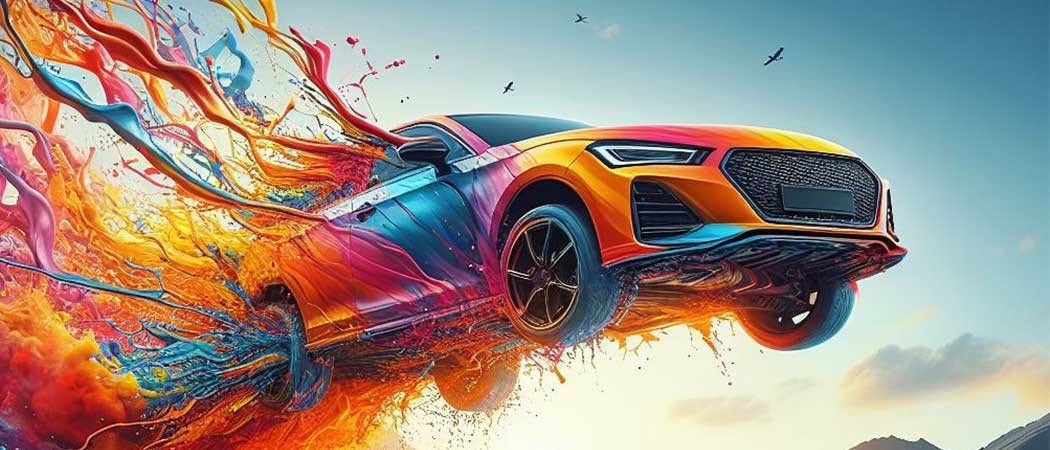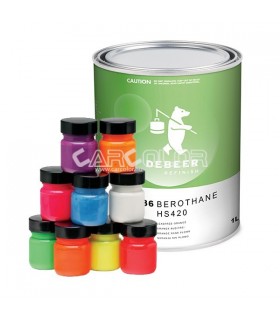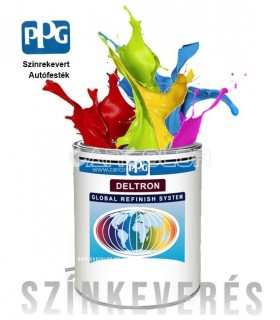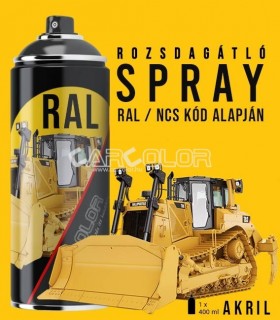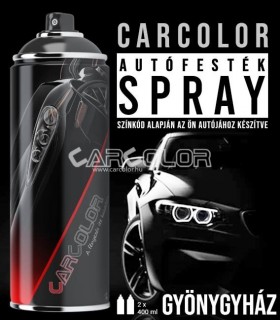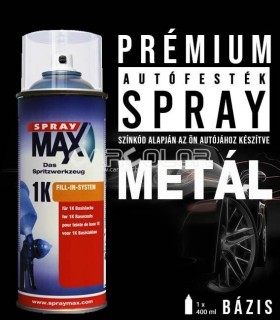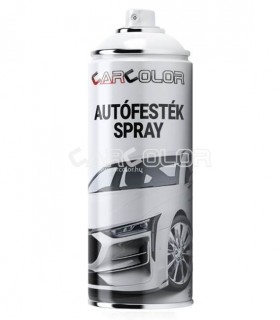What types of car paints exist and which one should I choose?
There are numerous types of paint finishes available today, ranging from solid (acrylic) to metallic, matte, and pearlescent coatings, as well as special-order options. In this article, we'll explore the various types of car paints encountered during car purchases and paint repairs, and also examine how different types of paint can impact the resale value of a car.
What is Acrylic Car Paint?
The vast majority of cars come standard with a solid, acrylic paint finish, while metallic and pearlescent finishes typically incur additional costs.
Acrylic paint is generally a more economical solution in terms of production and application during manufacturing, as well as in the event of repair due to damage. Most manufacturers offer a limited selection of acrylic colors as standard options for new models, commonly including the most popular colors such as black, red, white, blue, and gray.
Is there Lacquer Included?
As discussed in a previous post, acrylic car paints consist of 2 components: a pigmented resin and a hardener or curing agent that is mixed prior to application. 2k acrylic paint creates a very hard and resistant layer on the surface, providing protection against weather and other harmful effects while also providing an aesthetic appearance. Its application is simpler, usually consisting of just two layers: primer and paint. A glossy finish is achieved, leading many to refer to it as including lacquer.
Repairing acrylic-painted cars is easier compared to those with metallic or pearlescent paint. Minor damages or stone chips on acrylic car paint surfaces are often DIY repaired using a touch-up pen or brush matched to the appropriate shade. Larger repairs are also relatively easy, as non-metallic colors are much easier to apply with simpler technology.
What is Metallic (Base) Car Paint?
Why do we call it metallic? Why does this type of finish shine so brightly under natural light? The answer is not as complicated as one might think. Metallic paint contains tiny aluminum powder particles that reflect light, giving them a radiant shine not only in direct sunlight but also on cloudy days. We've compared the two types of paint in this video to better understand what we're talking about.
Let's examine the properties of metallic paint, which differ in several respects from conventional paints. Firstly, metallic paint is always single-component. This means that there is no need to add a separate hardener or curing agent to the paint, making it easier to use. However, as a result, the base paint itself is vulnerable and prone to losing its gloss, so it is mandatory to cover it with a two-component clear coat. The timing of applying the clear coat is also crucial: we have 30-60 minutes after matting to achieve a perfect result.
Metallic paint finishes often come with additional costs for new cars, starting at around 150-200,000 forints and varying depending on the vehicle's price. The base paint is generally more expensive for larger and more expensive cars. For example, Black Sapphire Metallic paint costs 305,000 forints on a BMW 3 Series, while it costs 415,000 forints on a BMW X5 (as of August 2023). The same paint is offered as a free option on the BMW M3, while the Range Rover offers 7 metallic paint options for free, so prices really depend on the car you choose.
Repairing metallic paint is more complicated because achieving an exact match is much harder due to the particles. Even in manufacturer-approved paint shops, misapplication is often encountered.
Misapplication: It is often observed during factory painting that there are color shade differences between different elements of the car. The car painter can bridge this gap by performing a mist coat to create a color transition between the elements. As a result, the difference becomes almost imperceptible.
What is Pearlescent Paint?
Car manufacturers typically offer a limited range of pearlescent colors, but high-end brands may offer dozens of options. Naturally, such special paints come with a hefty price tag, and those who want one will have to dig deep into their pockets.
Why pearlescent? One might think that pearlescent paint is made from pearl powder, but the reality is that the pearlescent luster is created by ceramic crystals in the paint, which both reflect and refract light. This effect gives the color a depth that even metallic paints cannot replicate. Under bright light, lighter shades become iridescent, appearing to be different colors from different angles, creating a stunning effect.
Despite their high price, pearlescent paints are even more susceptible to marks and are much more difficult to repair than metallic or acrylic counterparts. Generally, a full pearlescent finish consists of at least two or three different paint layers, in addition to primer and 2k lacquer.
Matte Car Paint, Do We Need This?
Matte finishes have become more popular in recent years, but fortunately, they are not too common, as they are usually available in only a few colors and are much more expensive than pearlescent shades.
Many people are unaware that repairing factory matte finishes is much more expensive than conventional paints because they cannot be polished or repaired after application. If something goes wrong, a repaint is required in all cases to remove the damage. Achieving perfect color matching often requires repairing neighboring elements (applying a mist coat) to ensure a consistent appearance according to factory specifications. Their maintenance also hides a few pitfalls, as they often become shiny over time, which is usually due to improper cleaning.
Matte finishes require a lot of maintenance: they need to be regularly cleaned with specialized shampoos and surface protectants. Bird droppings should be removed immediately or as soon as possible, as they contain acids that can lead to rapid spotting on these surfaces. A good example of this was a few years ago when BMW released a special matte-finished M3, and owners had to sign a warranty waiver regarding painting.
Matte car paint is undoubtedly divisive: while some people like it, many more dislike it, and undoubtedly, they cause many more problems than average paints.

